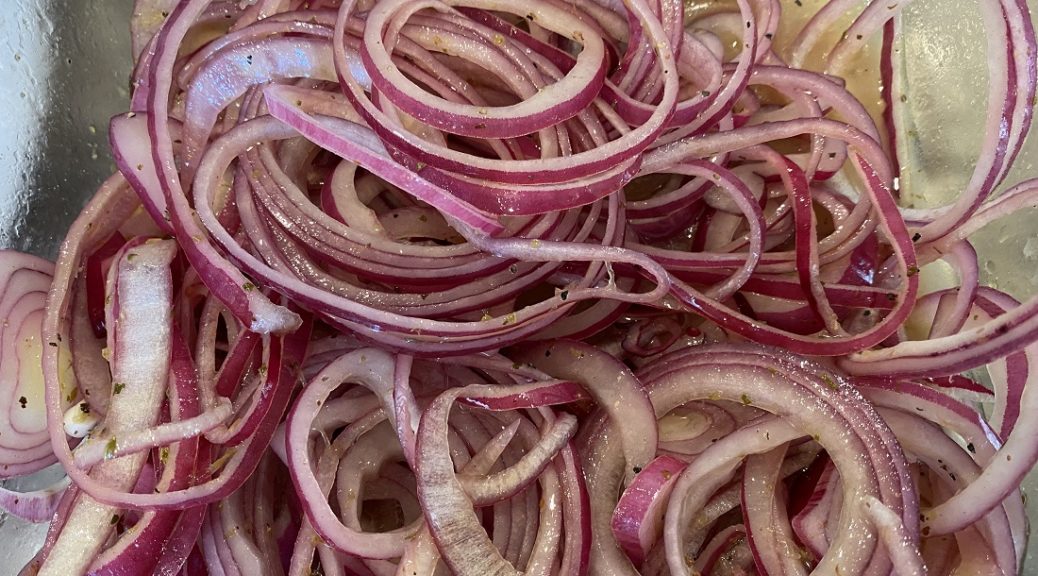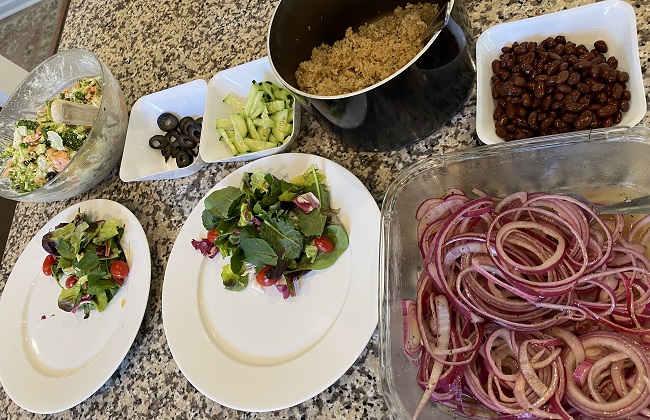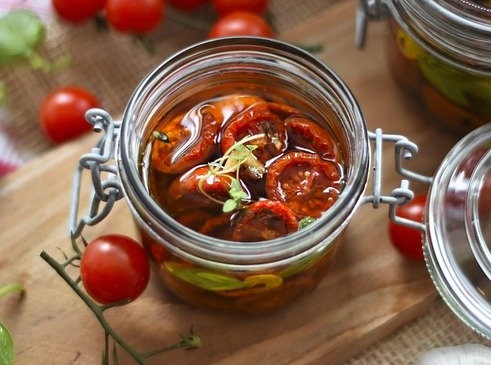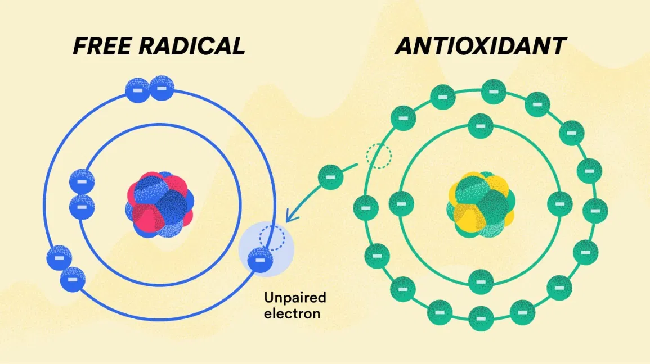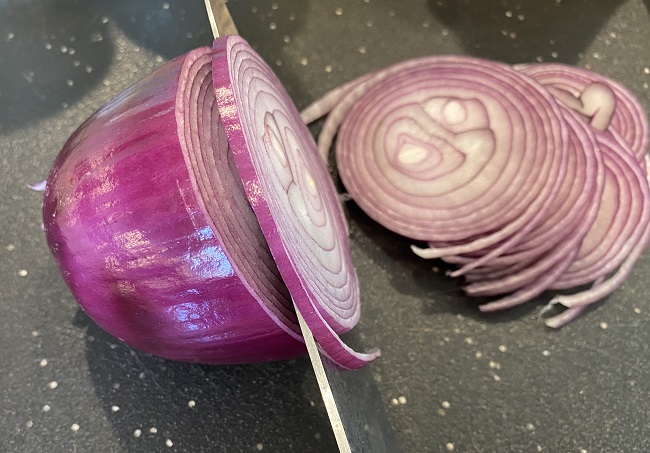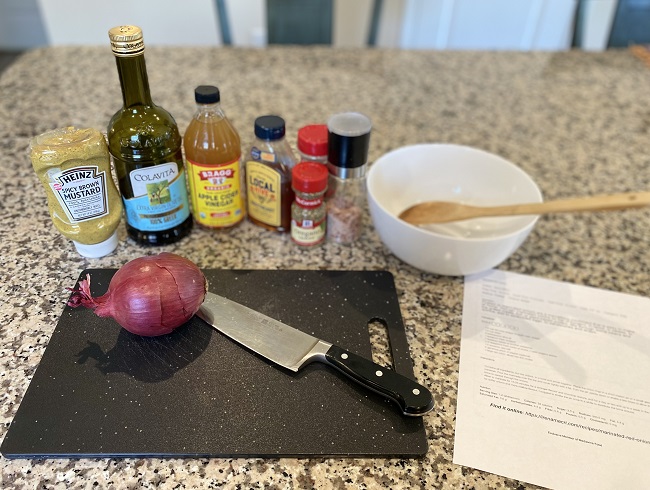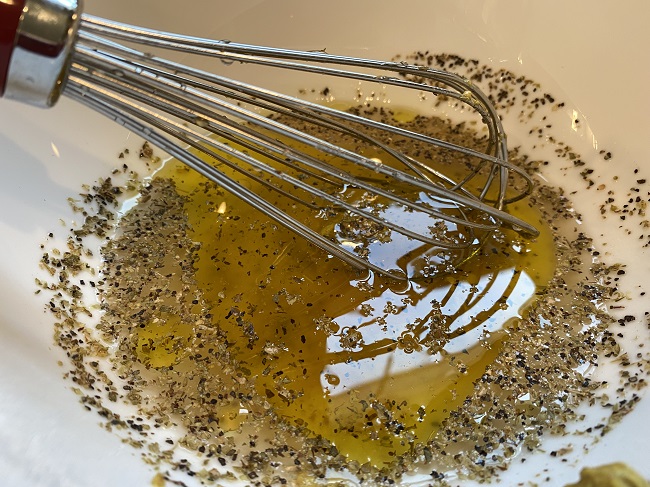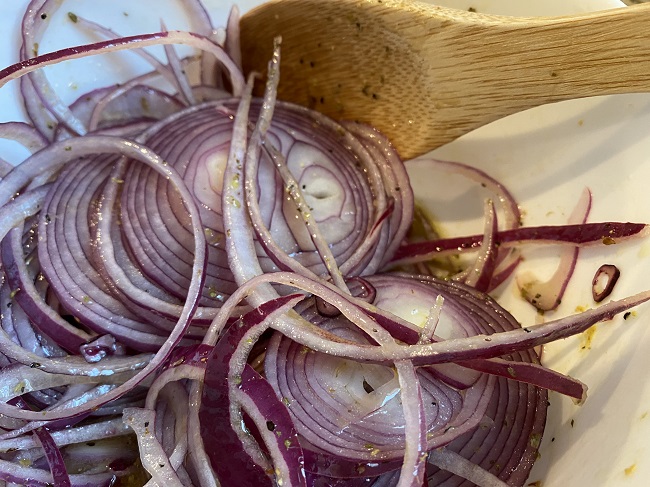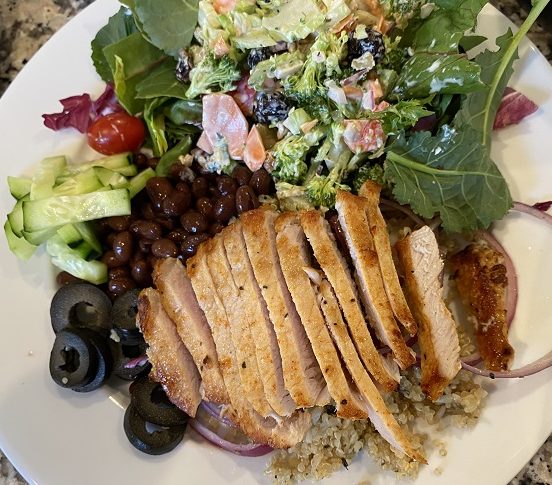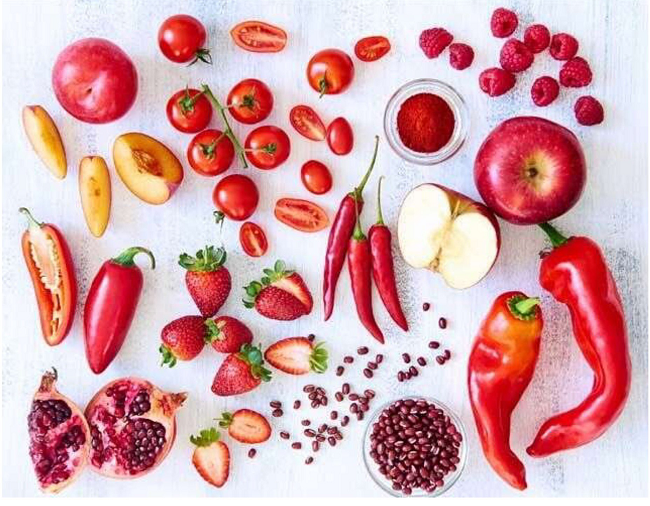When in doubt, go for the color.
Colorful fruits and vegetables are chockfull of benefits. They are often described as having phytonutrients – which means they have plant-derived compounds that are good for us.
Whether you can quote all the phytonutrients found in each colorful bite or not doesn’t matter.
Just know colorful foods are full of goodness, have less or none of the bad, will not weigh you down, are convenient and affordable, and offer a whole body health boost – as stated by the American Heart Association.
Today, we are concentrating on all things red, with a recipe for red/purple onions at the end.
Lycopene is the standout phytonutrient of red fruits and vegetables. The push to add extra tomato sauce and paste to recipes is because studies show lycopene helps to prevent, and even reverse, prostate cancer.
Watermelon is even higher in lycopene than tomatoes, and it also has citrulline which may help treat Erectile Dysfunction.
But reds are not just benefitting the guys.
We are all getting an abundance of vitamins and minerals with each bite – along with a host of anti-inflammatory and antioxidant benefits. Remember, excess inflammation drives disease and oxidative stress drives aging and causes the creation of free radicals which contribute to disease.
My recent foray into red onions included an inspiring meal at B J’s Restaurant and Brewhouse in Cary, NC. The food in this chain restaurant was fresh and did not taste mass produced. The Cauliflower and Quinoa Power Bowl with Blackened Salmon sent me home in search of marinated red onion recipes and a desire to recreate the basic parts of this dish.
Many recipes for marinated red onions often include large quantities of sugar in the brine mixture. That’s a no go for me. Others involved several boiling water baths for the onion rings.
Meh. Too much work.
I finally settled on this combination of ingredients that was easy:
Marinated Red Onions 101
In a large, wide-mouth glass jar or large bowl, place 1 large red onion, sliced into thin circles.
In a smaller bowl, combine the following:
1/4 cup / 60 ml red wine vinegar or apple cider vinegar
1/4 cup / 60 ml water
2 Tbs. / 30ml extra virgin olive oil
1 tsp. / 5 ml Dijon mustard – I used spicy brown mustard this time
1 tsp. / 5 ml honey
1 Tbs. / 15 ml chopped fresh herbs or 1 tsp. / 5 ml dry herbs (to taste) – I used dried oregano
1/2 tsp. / 2.5 ml sea salt
Fresh ground pepper to taste.
Whisk the ingredients until well-combined and pour over the onions.
If using a glass jar, screw on the lid and shake a bit to coat and break apart the onion slices. Refrigerate and shake every so often.
If using a bowl, stir the onions and marinade, separating the onion rings as you go. Cover, refrigerate, and stir occasionally.
These rings will be crunchy and tasty in a few hours, and deliciously wilted in a day or two.
Marinated red onions offer visual, taste, and textural appeal to salads, protein entrees, tacos, burgers, and to top savory quinoa.
You don’t have to tell the family they are getting blood pressure lowering sulfur, lots of quercetin to calm inflammation and impart antibacterial protection, fiber, probiotics, or a host of other things.
Nope. Just enjoy the compliments
Look how our dinner plates turned out. The protein was sliced boneless pork chops.
Recipe for my homemade version of Near East Rice with Quinoa next time.
See if you can add some red pepper, tomato, strawberry, raspberry, watermelon, apple, cranberry, cherry, red onion, pomegranate, or beet to your next meal.
In health-
Deidre
Widen the circle of love by sharing this article using the MORE button options below.
As an Amazon Associate, I earn from qualifying purchases.

